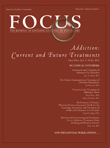The Clinical Assessment and Treatment of Nicotine Dependence
Abstract
In the United States and around the world, nicotine dependence is a leading cause of preventable death. Smoking cessation results in immediate and enduring health benefits. A wide range of clinical interventions have been shown to facilitate smoking cessation and to have a favorable cost-benefit profile. Practice guidelines and national reports have issued calls to action and have made smoking cessation resources readily available. Yet utilization of smoking cessation interventions and resources is lagging. Health care systems and providers have a shared responsibility to ensure that all smokers are offered appropriate interventions. This article summarizes the epidemiology and pathophysiology of nicotine dependence as a background for reviewing the central components of clinical evidence-based smoking cessation interventions: screening, assessment, advice, assistance, and follow-up. Specific patient populations are discussed, as well as emerging strategies to address nicotine dependence.



